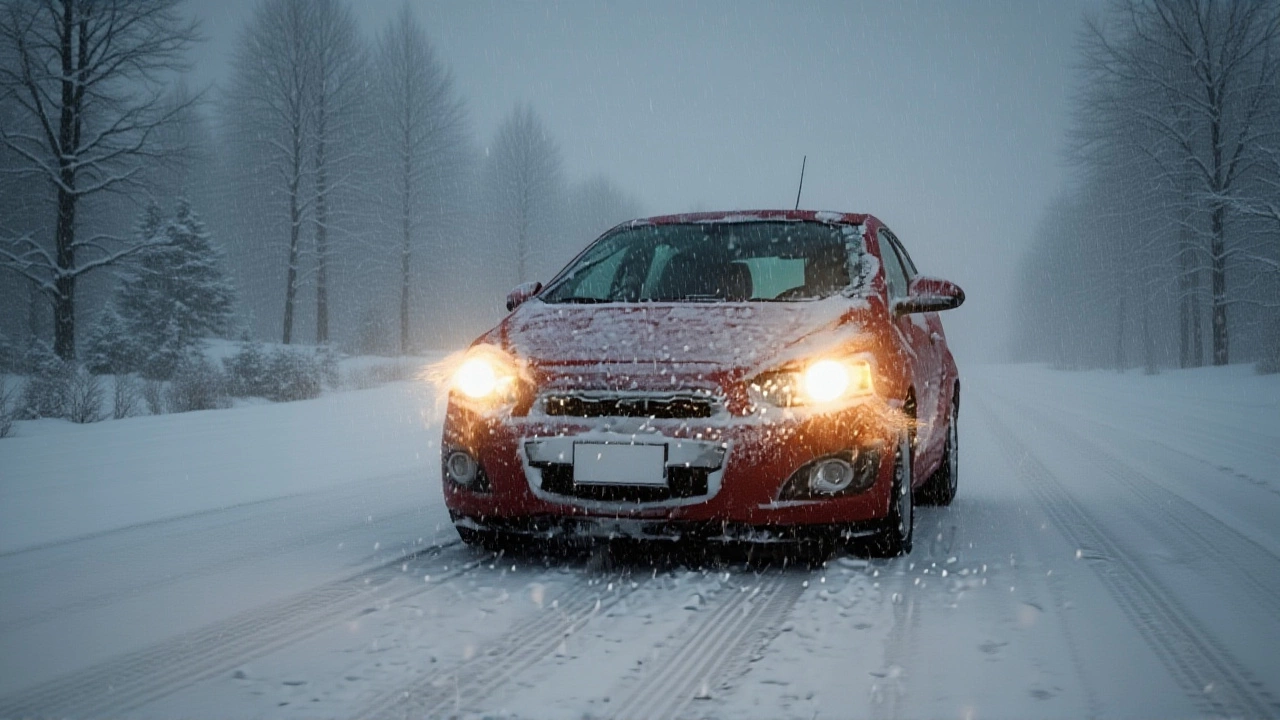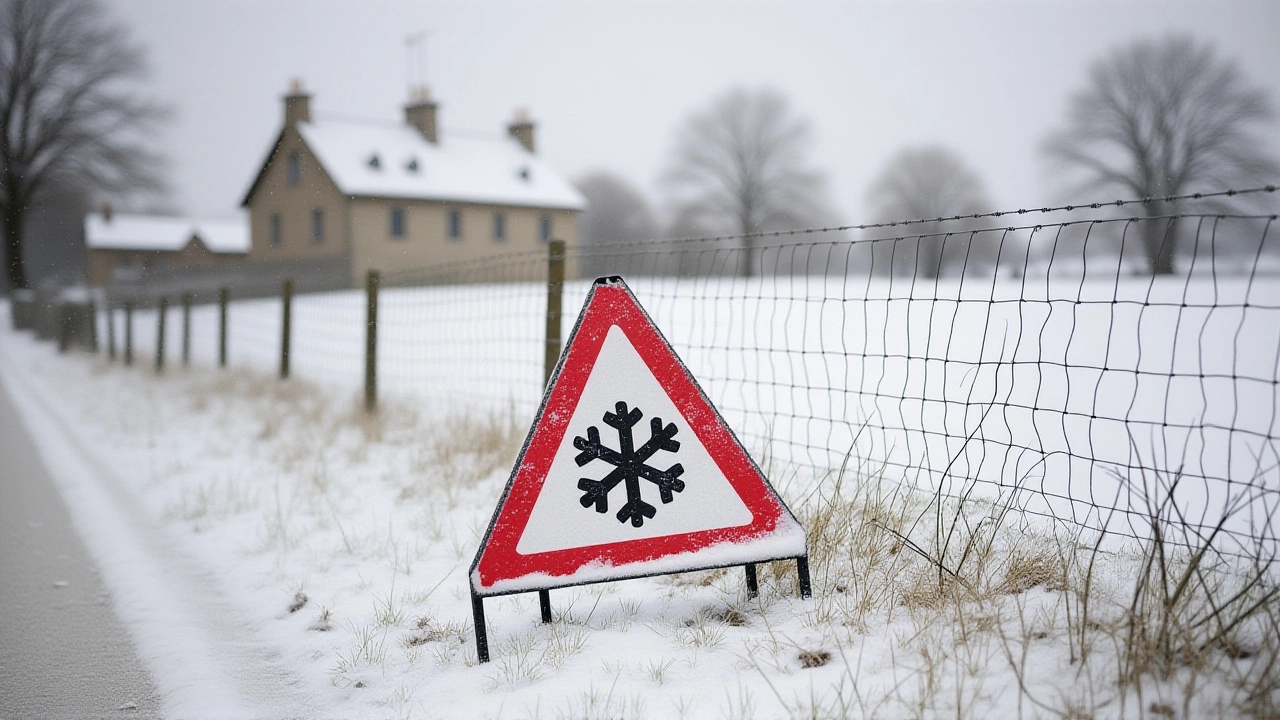When the UK Health Security Agency (UKHSA) issued an Amber Cold Health Alert for Greater Manchester, it wasn’t just another weather warning — it was a lifeline call to thousands of vulnerable residents. Effective from 12:00 p.m. on Monday, November 17, 2025, and lasting until 8:00 a.m. on Saturday, November 22, the alert warned of a dangerous cold snap that could push temperatures as low as -2°C in the region, with snow, ice, and biting winds expected to compound the risk. This isn’t just about discomfort. It’s about lives. The UKHSA explicitly warned of a likely rise in deaths among the elderly and those with chronic illnesses, alongside a surge in emergency room visits and strained hospital capacity. And for a region still recovering from last winter’s strain on care services, this is a nightmare scenario unfolding in real time.
The Cold That Came Out of Nowhere
Just days before, Greater Manchester was basking in what felt like an Indian summer — crisp, sunny days hovering around 5°C, leaves still clinging to trees, no hint of winter’s grip. Then, like a switch flipped, Arctic air surged south. By Saturday, November 15, the UK recorded its coldest night since March, with Tulloch Bridge in the Scottish Highlands dipping to -7°C. The Met Office didn’t mince words: temperatures could plunge to -10°C in isolated areas by midweek. Deputy chief meteorologist Dan Holley described it as a "brisk northerly wind" pairing with widespread frosts to create "marked wind chills" — a phrase that sounds technical but translates to: your skin feels like it’s being scraped with ice.Snowfall Timeline: When and Where It Hits
The snow didn’t arrive with a roar — it crept in, hour by hour. According to WX Charts, the first flakes fell in south and southwest Manchester at 9:00 p.m. on Tuesday, November 18, 2025, dusting Sale, Altrincham, and Stretford. By dawn Wednesday, it had spread to Cheshire and Merseyside. North and east Manchester — areas like Salford, Oldham, and Bury — saw snow arrive later that morning, mixed with rain that turned to sleet by midday. Forecasters predicted 2 to 5 centimeters of accumulation at low elevations, enough to make roads treacherous and public transport unreliable. Another wave is expected Saturday, November 22, starting at noon, with snow sweeping into north and east Greater Manchester before pushing into Lancashire and Yorkshire. The Met Office’s forecast for the period reads like a winter survival guide: "Windy with wintry showers falling as snow in places on Wednesday. Largely fine thereafter with sunny spells but rain possible Friday night. Much colder with overnight frost and ice."
Who’s Most at Risk — And Why
The UKHSA didn’t issue this alert for tourists or commuters. It was for the 72-year-old woman with COPD who can’t afford to turn up her heating. For the man in Rochdale with heart failure who lives alone. For the home care workers navigating icy driveways at 7 a.m. with oxygen tanks in tow. Cold weather doesn’t kill directly — it amplifies existing conditions. Hypothermia, respiratory infections, heart attacks — these spike during prolonged cold snaps. Data from the last major cold alert in 2023 showed a 22% increase in hospital admissions for respiratory issues in Greater Manchester alone. This year, with winter services already stretched thin after summer staffing shortages, the system could buckle.What’s Being Done — And What’s Not
Local councils have activated their Cold Weather Plan. Shelters are opening in Manchester city centre, Stockport, and Wigan. The Greater Manchester Combined Authority is distributing blankets and hot meals to rough sleepers. NHS 111 has doubled its winter response team. But here’s the gap: many elderly residents don’t know the alerts exist. Others can’t afford to heat their homes even if they do. A recent survey by Age UK Greater Manchester found that 38% of over-65s are choosing between food and heating this winter. That’s not just policy failure — it’s a humanitarian crisis wrapped in snowflakes.
What Comes Next
By Sunday, November 23, temperatures are expected to climb back above freezing, and the snow will melt into slush. But the damage may linger. Ambulances will still be delayed. Hospitals will still be full. And families will still be counting the cost — not just in pounds, but in lost days, lost energy, and lost lives. The Met Office says this cold snap is "typical for late November" — but that’s small comfort when you’re shivering in the dark. What’s needed isn’t just better forecasts. It’s better protection.Frequently Asked Questions
How does this cold snap affect elderly residents in Greater Manchester?
Elderly residents face the highest risk during this cold snap, with the UKHSA warning of likely increases in hypothermia, heart attacks, and respiratory infections. Over-65s in Greater Manchester saw a 22% spike in winter hospital admissions during the 2023 cold event. Many live alone, struggle with heating costs, and may not recognize early signs of hypothermia — such as confusion or slurred speech — until it’s too late.
Why is the amber alert specific to Greater Manchester and not the whole UK?
The amber alert targets areas where cold impacts are deemed "significant" — meaning higher population density, greater numbers of vulnerable residents, and strained health infrastructure. While yellow alerts cover most of England, the North West — including Greater Manchester — has a higher proportion of older adults and lower average household income, making it more vulnerable to cold-related health crises than rural or southern regions.
What should people do if they or a neighbor show signs of hypothermia?
If someone is shivering uncontrollably, confused, or has slurred speech, call 999 immediately. While waiting, move them to a warmer place, wrap them in blankets (avoiding direct heat like hot water bottles), and give warm, non-alcoholic drinks. Do not assume they’re just "feeling old" — hypothermia can kill within hours, especially in those with heart or lung conditions.
Is this cold spell unusual for November in the UK?
While cold snaps aren’t rare, the timing is. November 2025 followed unusually mild early-week temperatures, making the plunge to -2°C feel more extreme. The UKHSA notes that rapid temperature swings — like the jump from 5°C to -2°C in under 72 hours — are becoming more common due to climate instability, increasing the risk of health system overload even in "typical" winters.
How long will the snow last in Greater Manchester?
Snow is expected to begin melting by Sunday, November 23, as temperatures rise above freezing. However, ice patches will persist overnight into Monday, especially on bridges and shaded roads. The second snow event on Saturday, November 22, will be lighter and shorter-lived, ending by early evening. Local authorities warn that slush and refreezing could make travel dangerous through Tuesday, November 25.
Are schools and public services closing because of the snow?
As of now, no official closures have been announced, but individual schools and councils may make localized decisions. Greater Manchester’s transport network is operating with reduced services, especially in areas like Bury and Oldham where snowfall is heaviest. Residents are urged to check their council’s website or local news before traveling. Emergency services remain fully operational, but response times may be delayed.
